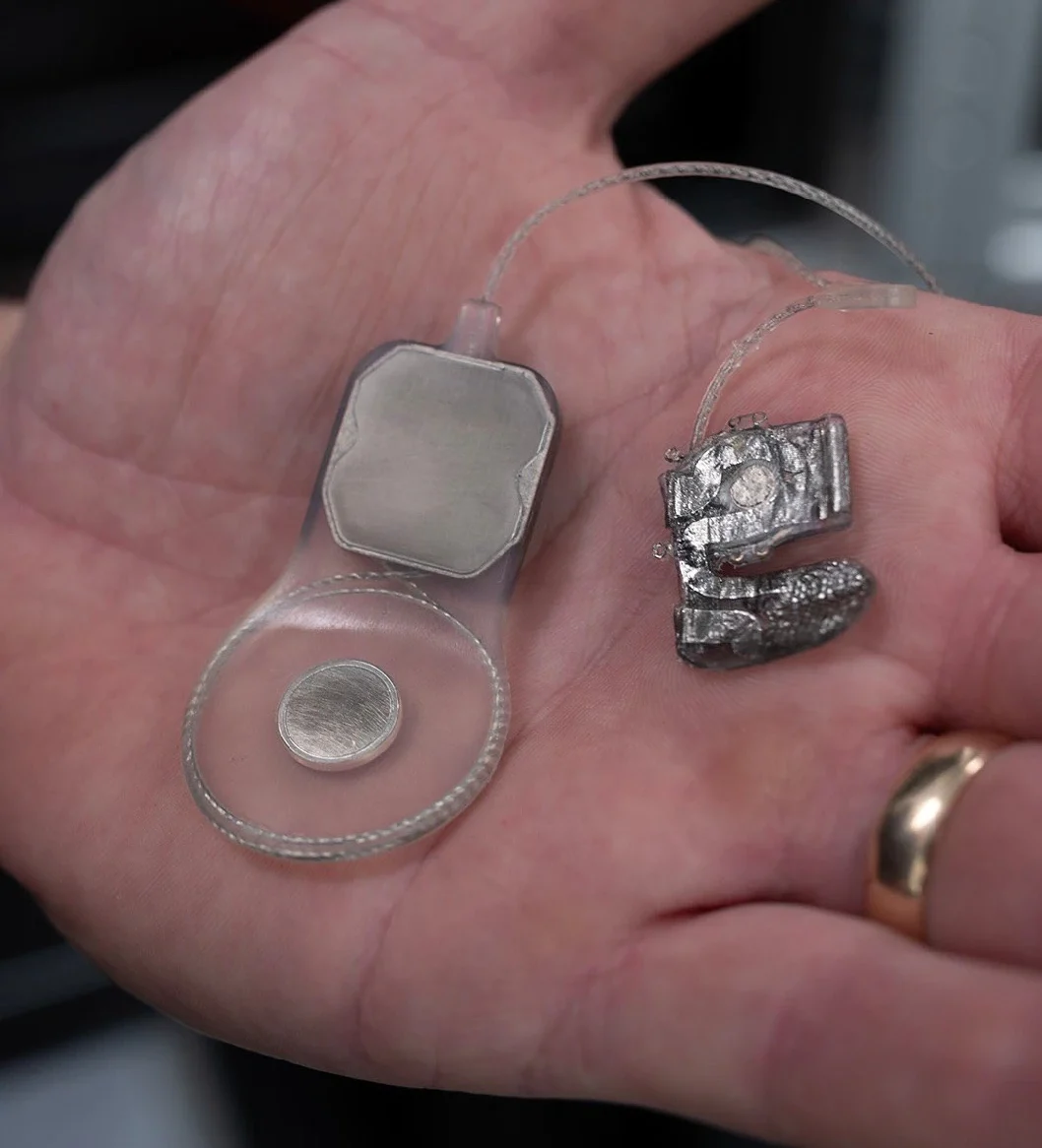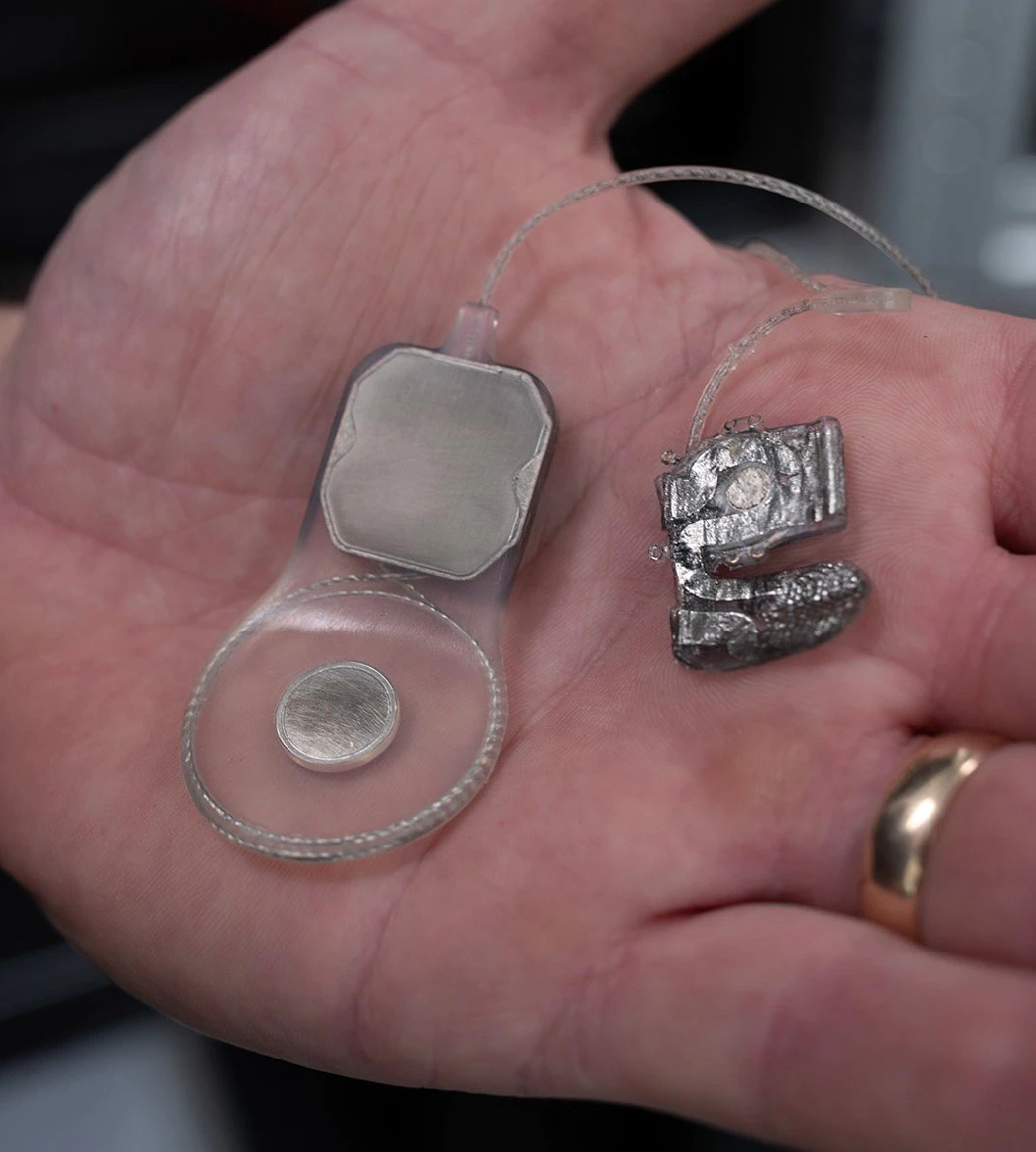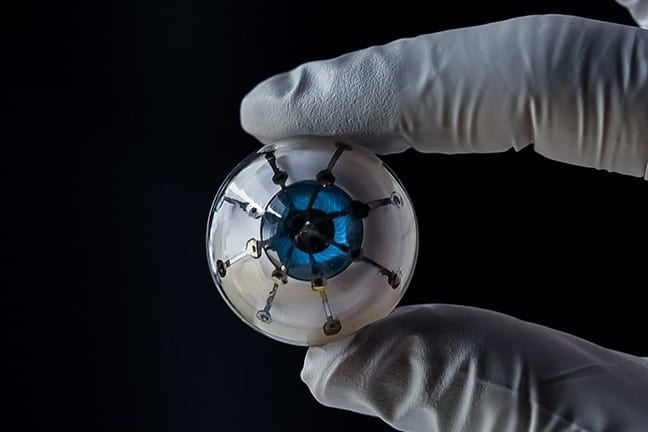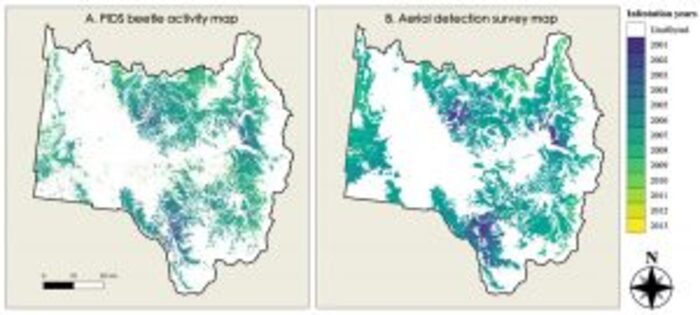
Developed by researchers in biomedical engineering: The Phoenix99 Bionic Eye
Promising results for University of Sydney bionic eye
A bionic eye being developed by a team of biomedical researchers at the University of Sydney and UNSW has shown to be safe and stable for long-term implantation in a three-month study, paving the way towards human trials.
The Phoenix99 Bionic Eye is an implantable system, designed to restore a form of vision to patients living with severe vision impairment and blindness caused by degenerative diseases, such as retinitis pigmentosa. The device has two main components which need to be implanted: a stimulator attached to the eye and a communication module positioned under the skin behind the ear.
Published in Biomaterials, the researchers used a sheep model to observe how the body responds and heals when implanted with the device, with the results allowing for further refinement of the surgical procedure. The biomedical research team is now confident the device could be trialled in human patients.
The team will now apply for ethics approval to perform clinical trials in human patients, as they continue to develop and test advanced stimulation techniques.
The Phoenix99 Bionic Eye works by stimulating the retina – a thin stack of neurones lining the back of the eye. In healthy eyes, the cells in one of the layers turn incoming light into electrical messages which are sent to the brain. In some retinal diseases, the cells responsible for this crucial conversion degenerate, causing vision impairment. The system bypasses these malfunctioning cells by stimulating the remaining cells directly, effectively tricking the brain into believing that light was sensed.
“Importantly, we found the device has a very low impact on the neurons required to ‘trick’ the brain. There were no unexpected reactions from the tissue around the device and we expect it could safely remain in place for many years,” said Mr Samuel Eggenberger, a biomedical engineer who is completing his doctorate with Head of School of Biomedical Engineering Professor Gregg Suaning.
“Our team is thrilled by this extraordinary result, which gives us confidence to push on towards human trials of the device. We hope that through this technology, people living with profound vision loss from degenerative retinal disorders may be able to regain a useful sense of vision,” said Mr Eggenberger.
Original Article: Bionic eye study paves the way towards human trials
More from: University of Sydney | University of New South Wales
The Latest Updates from Bing News & Google News
Go deeper with Bing News on:
Bionic eye
- The Advent Of Tech In Science: How Optogenetics Seeks To Further The Development Of ‘Bionic Eye’
Once a topic of science fiction and lore, the idea of restoring eyesight is finally becoming an approachable reality. Today, the idea of building visual prosthesis has become less the subject of ...
- Bionic Eye Market CAGR of 12.7%, Future Looks Bright for Market Size with Soaring Projections
Bionic Eye Market is valued at approximately USD 183.5 million in 2019 and is anticipated to grow with a healthy growth rate of more than 12.7% over the forecast period 2020-2027. Bionic eye, also ...
- A ‘bionic eye’ scan of an ancient, scorched scroll points to Plato’s long-lost gravesite
Deposit Photos SHARE A research team’s “bionic eye” deciphered thousands of new words hidden within an ancient scroll carbonized during the eruption of Mount Vesuvius—and the new text ...
- A 'bionic eye' scan of an ancient, scorched scroll points to Plato's long lost gravesite
Technology continues to reveal new details written on parchment burned by the Mount Vesuvius eruption of 79 CE.
- Plato’s final resting place revealed using ‘bionic eye’
Researchers believe that they have identified the location of Plato’s burial site. According to their findings, his final resting place appears to be in a private area in a garden in the academy, near ...
Go deeper with Google Headlines on:
Bionic eye
[google_news title=”” keyword=”bionic eye” num_posts=”5″ blurb_length=”0″ show_thumb=”left”]
Go deeper with Bing News on:
Useful sense of vision
- Revolutionizing Vision: The Latest Advances in LASIK Eye Surgery
LASIK eye surgery, a groundbreaking procedure that has revolutionized the field of ophthalmology, has undergone a significant evolution since its inception. This technique, which stands for ...
- Experimental gene therapy restores some vision in patients with inherited blindness
For her entire life, college student Olivia Cook had only a small degree of central vision. It was as if she was watching the world through a straw hole, and in dimly lit places, she could not make ...
- Outdoor Action Guide to Nature Observation & Stalking
Flash back and forth through your various senses, vision, hearing, smell, touch, and taste. We tend to use focal vision about 95% of the time and wide-angle vision only 5%. Animals use the reverse (5% ...
- “I Saw the TV Glow” Is a Profound Vision of the Trans Experience
In Jane Schoenbrun’s new feature, two teens search for their true selves through their shared obsession with a horror TV series.
- 5 headsets you should buy instead of the Vision Pro
The Vision Pro no longer has the best VR headset available. Check out these challengers that beat Apple's best in display quality, comfort, and price.
Go deeper with Google Headlines on:
Useful sense of vision
[google_news title=”” keyword=”useful sense of vision” num_posts=”5″ blurb_length=”0″ show_thumb=”left”]











